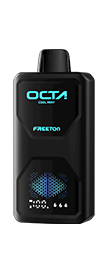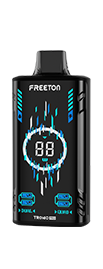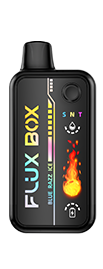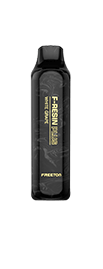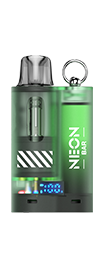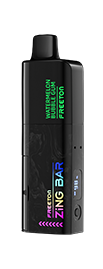
In recent years, the use of disposable electronic cigarettes has become increasingly prevalent, prompting the need for clarity on their usage in various settings. One area where regulations and restrictions are of particular importance is air travel. This guide aims to explore the policies and guidelines implemented by airlines and aviation authorities regarding the use […]
In recent years, the use of disposable electronic cigarettes has become increasingly prevalent, prompting the need for clarity on their usage in various settings. One area where regulations and restrictions are of particular importance is air travel. This guide aims to explore the policies and guidelines implemented by airlines and aviation authorities regarding the use of disposable electronic cigarettes on airplanes. By examining international airline policies, European aviation regulations, Transportation Security Administration (TSA) guidelines, safety concerns, alternatives for nicotine delivery, smoker's lounges, legal consequences, passenger awareness, and education, this guide provides valuable insights into the subject matter.
Overview of the Increasing Prevalence of Disposable Electronic Cigarettes and the Need for Clarity on Air Travel Policies
Disposable electronic cigarettes have gained popularity as an alternative to traditional smoking. Their compact size, convenience, and lack of tobacco combustion have made them attractive to many smokers. As a result, more individuals are carrying these devices with them when they travel. However, the lack of uniformity in regulations across airlines and countries has created confusion and uncertainty among passengers.
The increasing prevalence of disposable electronic cigarettes necessitates clear and consistent policies to ensure the safety and comfort of all passengers during air travel. It is crucial for both passengers and airline personnel to understand the rules and restrictions regarding the use of these devices on airplanes. This guide aims to provide a comprehensive overview of the current regulations and guidelines, empowering travelers with the knowledge they need to comply with the rules and make informed decisions.
International Airline Policies
The policies and regulations regarding the use of disposable electronic cigarettes on airplanes vary among international airlines. Each airline has its own set of guidelines, restrictions, and requirements to ensure the safety and well-being of passengers and crew members. It is important for travelers to familiarize themselves with the specific policies of the airline they are flying with.
Some airlines strictly prohibit the use of disposable electronic cigarettes on board, considering them to fall under the category of prohibited smoking devices. Others may allow their use in designated areas or under certain conditions. Understanding these policies is crucial to avoid any potential conflicts or violations during the flight.
In addition to the usage restrictions, airlines also provide guidelines on the storage and disposal of disposable electronic cigarettes. These guidelines ensure the safe handling of these devices and minimize any potential risks associated with their use on board.
It is worth noting that the policies and regulations can evolve over time as new research and developments emerge. Therefore, it is important for passengers to check for updates and changes to airline policies before their travel dates.

European Aviation Regulations
In Europe, the European Aviation Safety Agency (EASA) plays a significant role in establishing guidelines and regulations for aviation safety. EASA works in conjunction with national aviation authorities to ensure consistency and adherence to safety standards across European countries.
Regarding the use of disposable electronic cigarettes on airplanes, the EASA has issued guidelines that align with the general principles of prohibiting smoking on board. However, specific regulations may vary among European countries, as national aviation authorities have the authority to establish their own rules within the framework set by the EASA.
Passengers traveling within Europe or to European destinations should be aware of the guidelines provided by both the EASA and the respective national aviation authorities. These guidelines aim to ensure a harmonized approach to aviation safety while accounting for the unique circumstances and regulations of each country.
Understanding the common practices and restrictions applied across European countries is essential for travelers who wish to use disposable electronic cigarettes during their flights. Adhering to these guidelines helps promote a safe and comfortable environment for all passengers.
Transportation Security Administration (TSA) Guidelines
In the United States, the Transportation Security Administration (TSA) is responsible for ensuring the security of air travel. The TSA has established guidelines regarding the transportation of items through airport security checkpoints and during flights.
When it comes to disposable electronic cigarettes, the TSA allows passengers to bring them in carry-on bags or on their person. However, it is important to note that these devices should not be packed in checked luggage due to safety concerns related to their lithium-ion batteries. It is recommended to keep the devices readily accessible for inspection during the security screening process.
During the flight, the use of disposable electronic cigarettes is generally prohibited according to airline policies. Passengers should comply with these policies to maintain a safe and comfortable environment for all travelers. It is important to respect the rules set by both the airlines and the TSA to avoid potential conflicts or penalties.
Travelers should also be aware of limitations on quantities when carrying disposable electronic cigarettes. The TSA restricts the size and quantity of aerosol products, including those used for vaping, in carry-on bags. Familiarizing oneself with these limitations helps ensure a smooth and hassle-free journey through airport security checkpoints.
Safety Concerns and Air Quality
Safety concerns associated with the use of disposable electronic cigarettes on airplanes primarily revolve around two main aspects: fire hazards and potential interference with aircraft systems.
Disposable electronic cigarettes are powered by lithium-ion batteries, which have been known to pose fire hazards when not handled properly. There have been incidents reported where lithium-ion batteries in electronic devices have caught fire, prompting concerns about their usage on airplanes. To mitigate these risks, airlines and aviation authorities have implemented restrictions on the storage and charging of electronic devices, including disposable electronic cigarettes.
Another aspect of concern is the potential impact on cabin air quality and the comfort of other passengers. While the aerosol produced by disposable electronic cigarettes is generally considered less harmful than traditional cigarette smoke, its presence in the cabin can still cause discomfort for some individuals. Passengers with respiratory conditions or sensitivities may be more susceptible to the effects of aerosolized substances.
To ensure the safety and well-being of all passengers, airlines prioritize maintaining high air quality standards in the cabin. Implementing policies that restrict the use of disposable electronic cigarettes helps minimize potential discomfort and maintain a pleasant environment for everyone on board.
Alternatives for Nicotine Delivery on Airplanes
Given the restrictions on using disposable electronic cigarettes on airplanes, individuals who rely on nicotine for smoking cessation may seek alternative methods for nicotine delivery during flights.
Nicotine patches, gums, or other non-aerosol alternatives can be viable options for passengers looking to satisfy their nicotine cravings without violating airline policies. These alternatives do not produce aerosol or involve combustion, making them more suitable for use in the confined space of an aircraft cabin.
Nicotine patches are discreet and can be applied to the skin, providing a controlled release of nicotine over time. Nicotine gums offer a chewing mechanism that delivers nicotine orally. Both methods provide a nicotine source without the need for inhalation, addressing the physiological aspect of nicotine dependency.
It is important for passengers to consider these alternative options and plan accordingly before their flights. By being aware of the available alternatives, individuals can ensure that their nicotine needs are met without compromising their compliance with airline policies.
Smoker's Lounges and Designated Areas
While the use of disposable electronic cigarettes is generally restricted on airplanes, some flights or airports may provide designated areas or smoker's lounges where smoking, including the use of disposable electronic cigarettes, is allowed.
Smoker's lounges are typically designated areas within airports that offer a space for smokers to indulge in their habit before or between flights. These lounges provide a controlled environment where individuals can use disposable electronic cigarettes without affecting other passengers.
For travelers on long layovers or flights that provide access to smoker's lounges, it may be possible to use disposable electronic cigarettes within these designated areas. However, it is important to note that the availability of smoker's lounges and designated areas varies among airports and airlines. Not all airports or flights offer these facilities, and even when they do, there may be certain restrictions or requirements to use them.
Passengers who wish to use disposable electronic cigarettes during layovers should research the airports they will be transiting through to determine if smoker's lounges or designated areas are available. It is also essential to familiarize themselves with any specific guidelines or rules associated with these areas.
When using smoker's lounges or designated areas, passengers should still be mindful of the comfort and well-being of other individuals present. It is important to follow any specific guidelines or regulations provided by the airport or airline, such as designated smoking zones or time limits for usage. Respecting the rules and being considerate of fellow travelers helps maintain a harmonious environment for everyone.
Additionally, it is advisable to plan the use of disposable electronic cigarettes within the designated areas in a manner that allows sufficient time for security checks, boarding, and connecting flights. Passengers should ensure that they have ample time to navigate the airport, comply with any security procedures, and reach their departure gate without rushing.
Legal Consequences and Penalties
Understanding and complying with airline policies regarding the use of disposable electronic cigarettes on airplanes is not only important for safety and comfort but also to avoid potential legal consequences and penalties.
Violating airline policies can result in penalties, ranging from warnings and fines to more severe consequences, depending on the severity of the violation and the regulations in place. It is essential for passengers to be aware that airlines have the authority to enforce their policies and take appropriate action against individuals who do not comply.
In addition to airline penalties, passengers should also consider the legal consequences associated with violating aviation regulations. Authorities responsible for ensuring aviation safety, such as the Federal Aviation Administration (FAA) in the United States or their equivalents in other countries, have the power to investigate and take legal action against individuals who jeopardize the safety and security of flights.
To avoid legal consequences and penalties, it is crucial for passengers to familiarize themselves with the regulations and guidelines provided by airlines and aviation authorities. By adhering to these rules, passengers can ensure a smooth and compliant travel experience.

Passenger Awareness and Education
Passenger awareness and education play a vital role in promoting compliance with airline policies and regulations regarding the use of disposable electronic cigarettes on airplanes. It is the responsibility of both airlines and airport authorities to provide clear and accessible information to passengers to ensure their understanding of the rules and guidelines.
Airlines can implement educational campaigns and initiatives to raise awareness among passengers. This can include providing information on their websites, in-flight magazines, and announcements during flights. Clear signage and visual aids in airports and on airplanes can also help convey important messages regarding the use of disposable electronic cigarettes.
Passengers should actively seek out information and educate themselves about the regulations specific to the airlines they are traveling with. Familiarizing oneself with the policies, restrictions, and safety guidelines ensures that passengers can make informed decisions and comply with the rules.
By enhancing passenger awareness and education, airlines and airport authorities can foster a culture of compliance and ensure a safe and pleasant travel experience for all passengers.
Conclusion
In conclusion, understanding the regulations and restrictions regarding the use of disposable electronic cigarettes on airplanes is essential for travelers who wish to comply with airline policies and ensure a safe and comfortable journey. By examining international airline policies, European aviation regulations, Transportation Security Administration (TSA) guidelines, safety concerns, alternatives for nicotine delivery, smoker's lounges, legal consequences, passenger awareness, and education, this guide has provided valuable insights into the subject matter.
Passengers should familiarize themselves with the policies of the airlines they are flying with and be aware of any specific guidelines or restrictions related to disposable electronic cigarettes. Compliance with these rules contributes to the safety and well-being of all individuals on board and helps maintain a harmonious environment during air travel.
It is crucial to respect the comfort and safety of fellow passengers and to understand that regulations are in place to ensure a secure and enjoyable travel experience. By being aware, informed, and considerate, travelers can navigate their journeys with confidence and contribute to a positive air travel environment for all.


